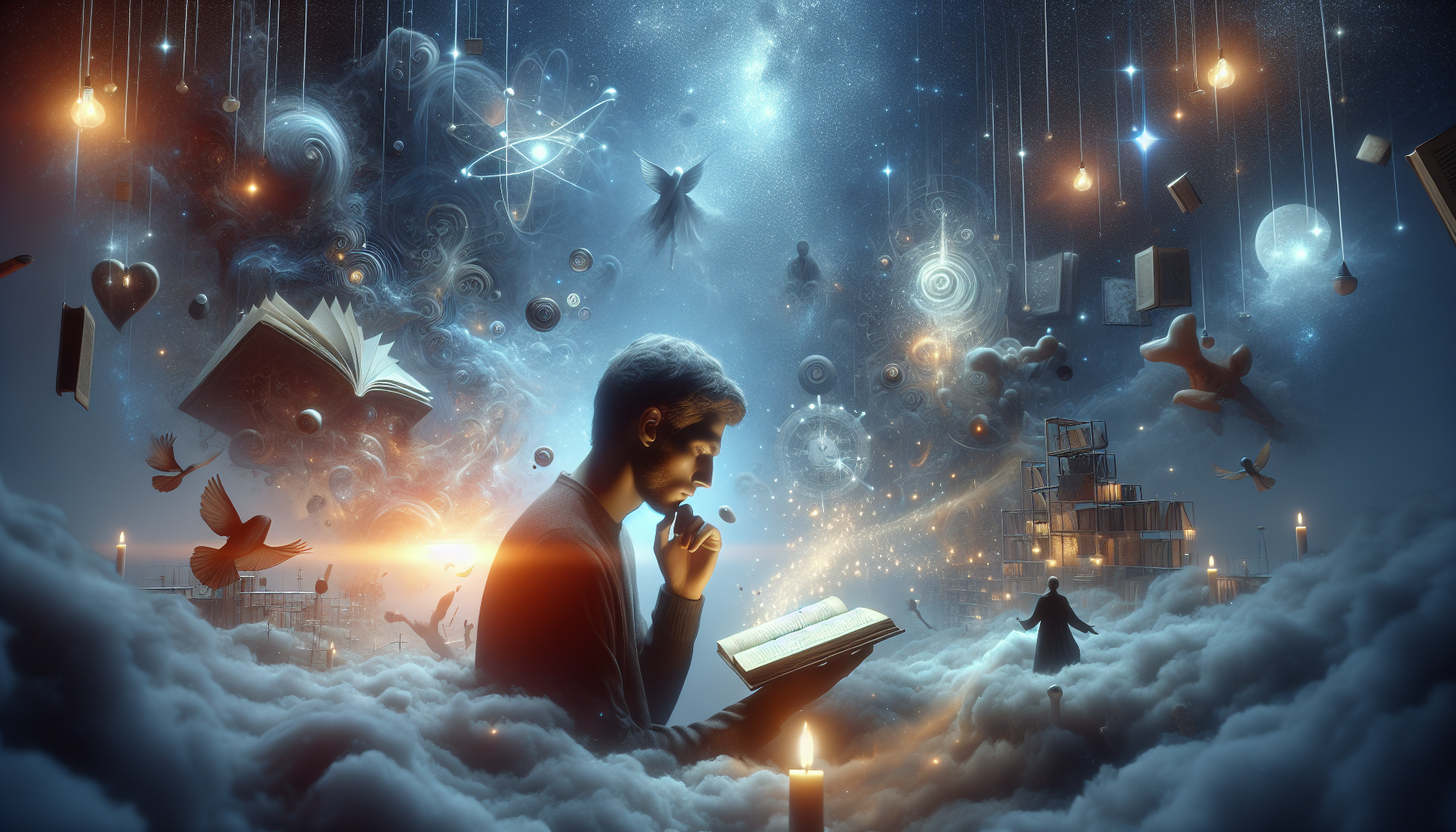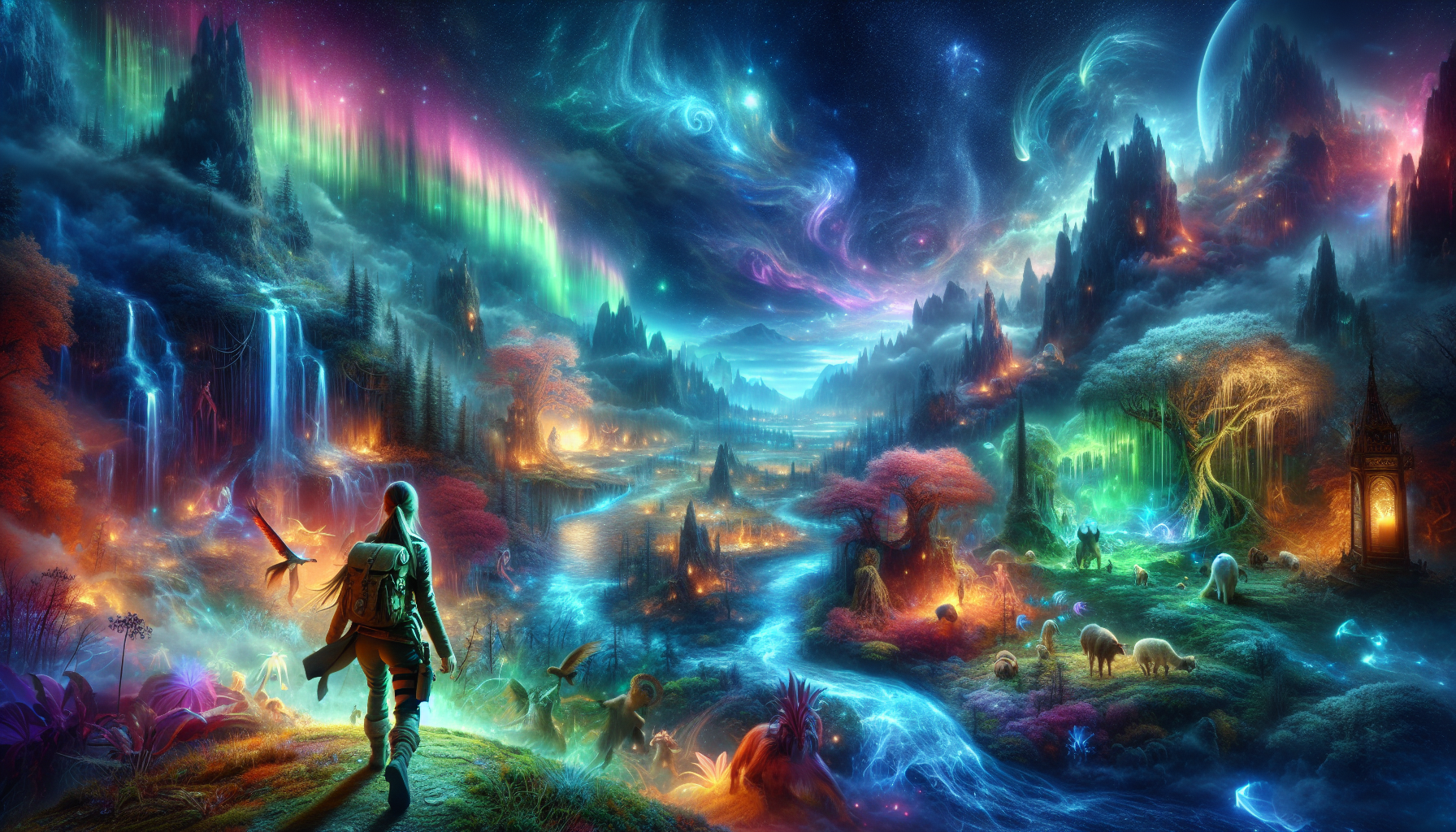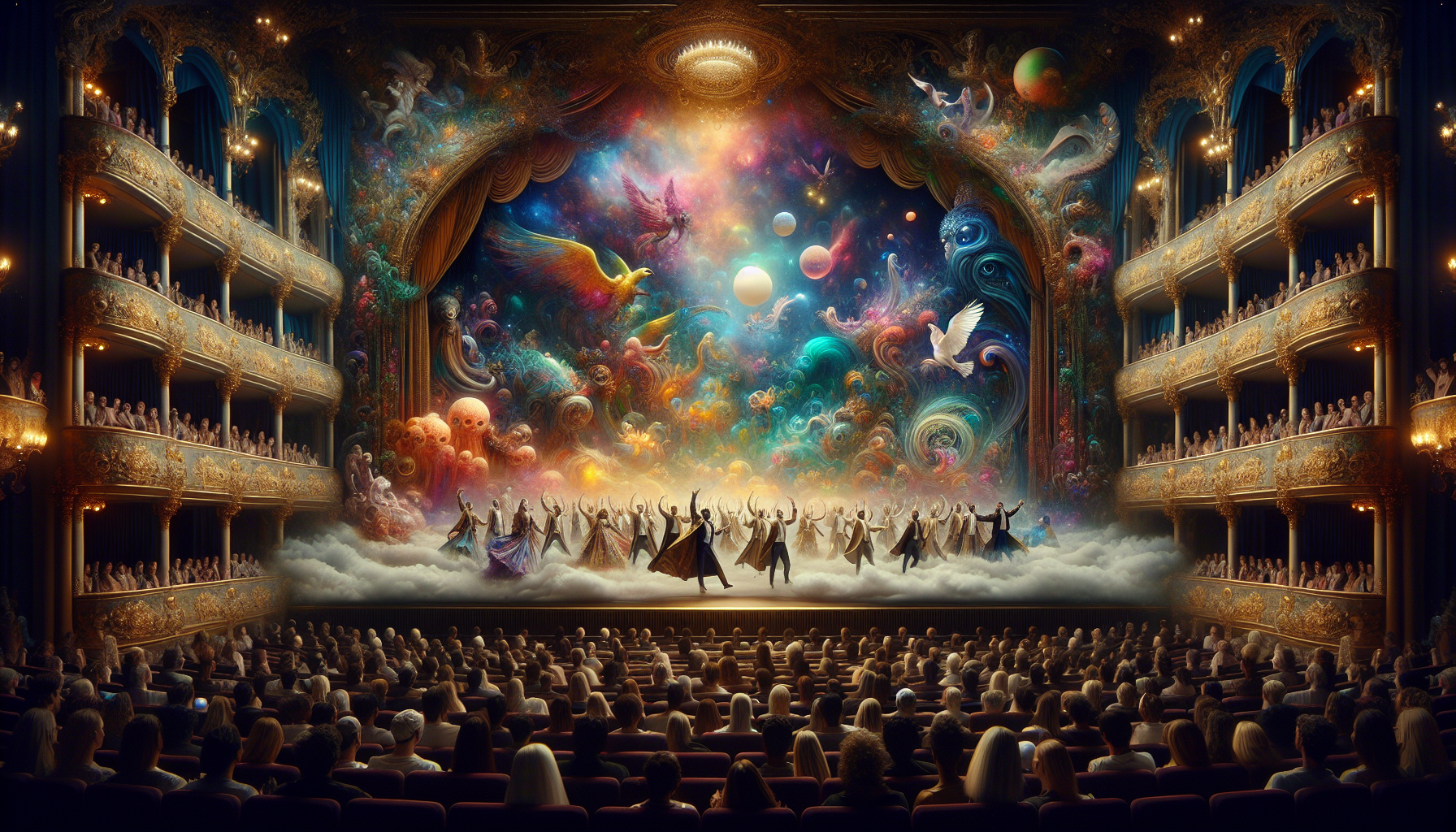Dreams have always fascinated humanity, serving as a mysterious bridge between our waking lives and the enigmatic realm of the subconscious. Throughout history, these nocturnal narratives have sparked curiosity and inspired countless interpretations, from ancient mythologies to modern psychological theories. Yet, despite centuries of exploration, the true essence and purpose of dreams remain elusive, leaving many of us pondering the deeper meanings behind the vivid and often bewildering imagery we experience each night. 🌙 As we embark on a journey to decode the language of dreams, we invite you to delve into the intricate tapestry of symbols and emotions woven into our nightly reveries, uncovering insights that might just transform the way you perceive both your dreams and your waking reality.
In this comprehensive exploration of the dreamscape, we will unravel the threads of what makes dreams so captivating and, at times, perplexing. We will begin by examining the science behind dreaming, exploring the various stages of sleep and the neurological processes that contribute to the vivid images and stories that unfold in our minds. From there, we will delve into the rich history of dream interpretation, tracing its evolution from ancient civilizations to contemporary perspectives. By understanding the cultural and historical contexts that have shaped our understanding of dreams, we gain a broader perspective on the universal and timeless nature of this phenomenon. 🧠
Our journey will also take us into the heart of dream analysis, where we will decode common symbols and themes that appear across cultures and individuals. Are our dreams merely random firings of the brain, or do they hold deeper meanings that can offer insights into our innermost desires, fears, and aspirations? We’ll explore psychological theories, such as those proposed by Sigmund Freud and Carl Jung, and examine how modern psychology continues to explore the role of dreams in emotional processing and problem-solving. Finally, we will provide practical tips and techniques for enhancing dream recall and interpretation, empowering you to unlock the hidden messages your subconscious is eager to communicate. So, fasten your seatbelt as we navigate the fascinating and often surreal world of dreams, uncovering the secrets that lie within and inviting you to embark on a journey of self-discovery and understanding. 🌌
## Understanding the Enigma of Dreams
Dreams have long fascinated humans, serving as a mysterious mirror reflecting our deepest emotions, fears, and desires. This ethereal realm often blurs the lines between reality and imagination, leading many to question the true nature of dreams. Are they mere cognitive echoes of our daily experiences, or do they hold deeper meanings waiting to be deciphered? In this section, we explore the fundamental aspects of dreaming, setting the stage for a more profound understanding of this enigmatic phenomenon.
Dreams are an intrinsic part of the human experience, occurring during the rapid eye movement (REM) phase of sleep. This stage is characterized by heightened brain activity, similar to the wakeful state, suggesting a potential link between dreams and consciousness. Scientists have long debated the purpose of dreams, with theories ranging from cognitive processing of emotions to evolutionary survival mechanisms. Some researchers propose that dreams are a means for the brain to organize memories, making sense of the myriad information we encounter daily. This perspective aligns with the idea that dreaming is a cognitive function, serving as a nighttime processing unit for our waking experiences.
Another intriguing theory posits that dreams are a form of wish fulfillment, a concept first introduced by Sigmund Freud. According to Freud, dreams are a window into the subconscious, allowing us to explore repressed desires and unresolved conflicts. While some dismiss this idea as overly simplistic, others see merit in the notion that dreams can offer valuable insights into our psychological well-being. Carl Jung, a contemporary of Freud, expanded on this idea by suggesting that dreams are not just personal reflections but also tap into the collective unconscious—a shared reservoir of human experiences and archetypes. This perspective introduces the possibility that dreams can serve as a bridge between the individual and the universal, offering a unique lens through which to view the human condition.
### The Language of Dreams: Symbols and Interpretation
Dreams often communicate in a language of symbols, a complex tapestry woven from the threads of our subconscious. Understanding this symbolic language is key to decoding the messages hidden within our dreams. However, interpreting dream symbols is no straightforward task, as meanings can vary widely based on cultural, personal, and contextual factors. In this section, we delve into the intricate world of dream symbolism, examining common themes and their potential interpretations.
| Symbol | Possible Meanings |
|---|---|
| Water | Emotions, subconscious, change |
| Flying | Freedom, escape, ambition |
| Teeth falling out | Fear of aging, loss, anxiety |
| Being chased | Avoidance, fear, stress |
| Death | Transformation, new beginnings, fear |
These interpretations serve as a starting point, but it is crucial to remember that dream symbols are deeply personal. What holds significance for one individual may mean something entirely different for another. For those interested in exploring their dreams further, keeping a dream journal can be a valuable tool. By recording dreams upon waking, patterns and recurring symbols can emerge, offering clues to their underlying meanings. This practice can also enhance dream recall, providing a richer tapestry of material to analyze.
### Dream Analysis: Techniques and Tools
The process of analyzing dreams can be both an art and a science, drawing from various disciplines such as psychology, neuroscience, and cultural studies. While some may rely on traditional methods of interpretation, others turn to modern techniques and tools to unlock the secrets of their dreams. In this section, we explore the diverse approaches to dream analysis, providing insights into how individuals can navigate this complex landscape.
One popular method of dream analysis is the use of guided introspection, a technique that involves reflecting on the emotions and imagery present in a dream. This approach encourages individuals to connect with their subconscious, exploring the feelings and thoughts that arise in response to specific symbols or scenarios. Techniques such as free association, where individuals spontaneously respond to dream symbols with the first thoughts that come to mind, can also be helpful in uncovering hidden meanings.
For those seeking a more structured approach, tools like the Dream Analysis Workbook can offer guidance. These workbooks often include prompts and exercises designed to help individuals systematically explore their dreams, identifying patterns and recurring themes. Some workbooks may also incorporate elements of cognitive-behavioral therapy (CBT), encouraging individuals to challenge negative thought patterns and reframe their interpretations in a more positive light.
In recent years, technology has also played a role in the evolution of dream analysis. Apps like Dreamboard and Dream Journal Ultimate allow users to record and track their dreams digitally, offering features such as mood tracking and symbol recognition. These apps often include social components, enabling users to share their dreams with others and gain insights from a community of fellow dreamers. Such platforms can provide a sense of connection and support, fostering a collaborative environment for dream exploration.
For a visual exploration of dream interpretation, consider watching the video “How to Interpret Your Dreams” by Practical Psychology on YouTube. This resource offers practical tips and insights into the process of decoding dream symbols, providing a helpful starting point for those new to dream analysis.
### Cultural Perspectives on Dreams
Dreams are a universal experience, yet the way they are perceived and interpreted can vary significantly across cultures. From ancient civilizations to modern societies, dreams have held a place of prominence in spiritual, philosophical, and artistic traditions. In this section, we delve into the rich tapestry of cultural perspectives on dreams, highlighting the diverse ways in which they are understood and valued.
- Indigenous Cultures: Dreams as spiritual communication and guidance.
- Tibetan Buddhism: Dream yoga as a path to enlightenment and self-awareness.
- Ancient Egypt: Dreams as divine messages and omens, often interpreted by priests.
- Freudian Psychoanalysis: Dreams as expressions of repressed desires and conflicts.
- Jungian Psychology: Dreams as a connection to the collective unconscious and archetypes.
These cultural perspectives underscore the multifaceted nature of dreams, highlighting their significance across time and space. Whether viewed as spiritual messages, psychological insights, or creative inspiration, dreams continue to captivate and inspire, offering a glimpse into the mysteries of the human mind.

Conclusion
**Conclusion: Unraveling the Language of Dreams**
Throughout this exploration of the mysterious world of dreams, we have delved into various facets of how dreams function and their profound significance in our lives. Our journey began by examining the historical context, where dreams were perceived as messages from the divine or reflections of one’s deepest fears and desires. This perspective has evolved, with modern psychology offering insights into how dreams mirror our subconscious mind, acting as a stage where unresolved conflicts and unexpressed emotions are played out.
We then ventured into the realm of neuroscience, where the intricate mechanisms of the brain during sleep stages, particularly REM sleep, illuminate the biological processes that facilitate dreaming. Scientists have mapped out how the brain consolidates memories and processes emotions during sleep, suggesting that dreams are not just random images but purposeful narratives that aid in cognitive and emotional development.
In exploring cultural interpretations, we saw how various societies assign different meanings to dreams, reflecting diverse cultural values and beliefs. This cross-cultural examination underscores the universal nature of dreaming and its capacity to transcend cultural boundaries, offering a unique lens through which we can understand human psychology and cultural anthropology.
Furthermore, we discussed the practical applications of dream interpretation in therapeutic settings. Psychologists and therapists often use dream analysis to help individuals uncover hidden aspects of their psyche, providing a pathway to healing and self-discovery. This therapeutic potential highlights the transformative power of dreams, encouraging us to pay closer attention to the narratives our subconscious weaves each night.
The journey into the language of dreams also brought us to the intriguing intersection of technology and dream research. Advancements in AI and machine learning have paved the way for new methodologies to decode dreams, offering promising avenues for further understanding the complexities of the human mind. These technologies hold the potential to revolutionize how we study and interpret dreams, making the once-impenetrable landscape of the subconscious more accessible than ever before.
As we conclude this deep dive into the language of dreams, it becomes clear that dreams are more than mere nocturnal musings; they are a vital part of the human experience, offering insights into our innermost thoughts and emotions. The study of dreams continues to captivate scientists, psychologists, and dreamers alike, serving as a reminder of the limitless potential of the human mind.
The importance of understanding dreams lies in their ability to connect us with our subconscious selves, fostering self-awareness and personal growth. By paying attention to our dreams, we can gain valuable insights into our emotional well-being and life circumstances, using this knowledge to navigate our waking lives with greater clarity and purpose.
We invite you to reflect on the dreams that have left a lasting impression on you. What messages might they be conveying? How can they guide you in your personal and professional life? Engage with this fascinating topic by sharing your thoughts and experiences in the comments below. Let’s create a community of dreamers who explore the depths of the subconscious together.
Don’t forget to share this article with friends and family who might find the exploration of dreams as intriguing as you do. Your engagement not only enriches the discussion but also fosters a deeper understanding of the human mind.
In closing, the world of dreams is a vast and uncharted territory, filled with the potential for discovery and enlightenment. By embracing the language of dreams, we embark on a journey of self-exploration and understanding, unlocking the secrets of our own minds. So, dream on, explore, and let your subconscious speak. 🌟
For further reading and exploration, consider visiting these resources:
2.
3. Scientific American – Dreams
These links provide additional insights into the science and psychology of dreams, offering valuable information for anyone interested in delving deeper into this fascinating subject.
Toni Santos is a visual storyteller and dream archivist whose work explores the delicate boundary between memory and imagination. Through layered visuals and symbolic design, Toni captures the fleeting essence of dreams — those strange, beautiful, and sometimes haunting fragments that drift through sleep and linger in waking thought.
His creative journey is rooted in a deep fascination with the subconscious and the imagery it conjures. From half-remembered landscapes to recurring symbols and surreal encounters, each piece Toni brings to life becomes a portal into the inner archive — where time distorts, meanings shift, and personal mythology takes form.
With a background in handcrafted artistry and visual composition, Toni merges intuition with intention. His work doesn’t just depict dreams; it preserves them, translating ephemeral moments into tangible expressions that evoke emotion, curiosity, and quiet revelation. Each visual is both a record and an invitation to explore the rich terrain of inner life.
As the guiding voice behind Vizovex, Toni offers illustrated dream journals, symbolic studies, and visual essays that help others connect with the poetic structure of their own subconscious landscapes. His art becomes a mirror — not just of what we see at night, but of what we carry deep within.
His work is a tribute to:
The fragile beauty of forgotten dreams
The language of symbols in the subconscious mind
The inner worlds we visit but rarely name
Whether you’re a lucid dreamer, a seeker of hidden meanings, or someone fascinated by the mystery of sleep-born stories, Toni welcomes you to step into a space where dreams are not lost — they are archived, one vision, one sketch, one silent narrative at a time.





